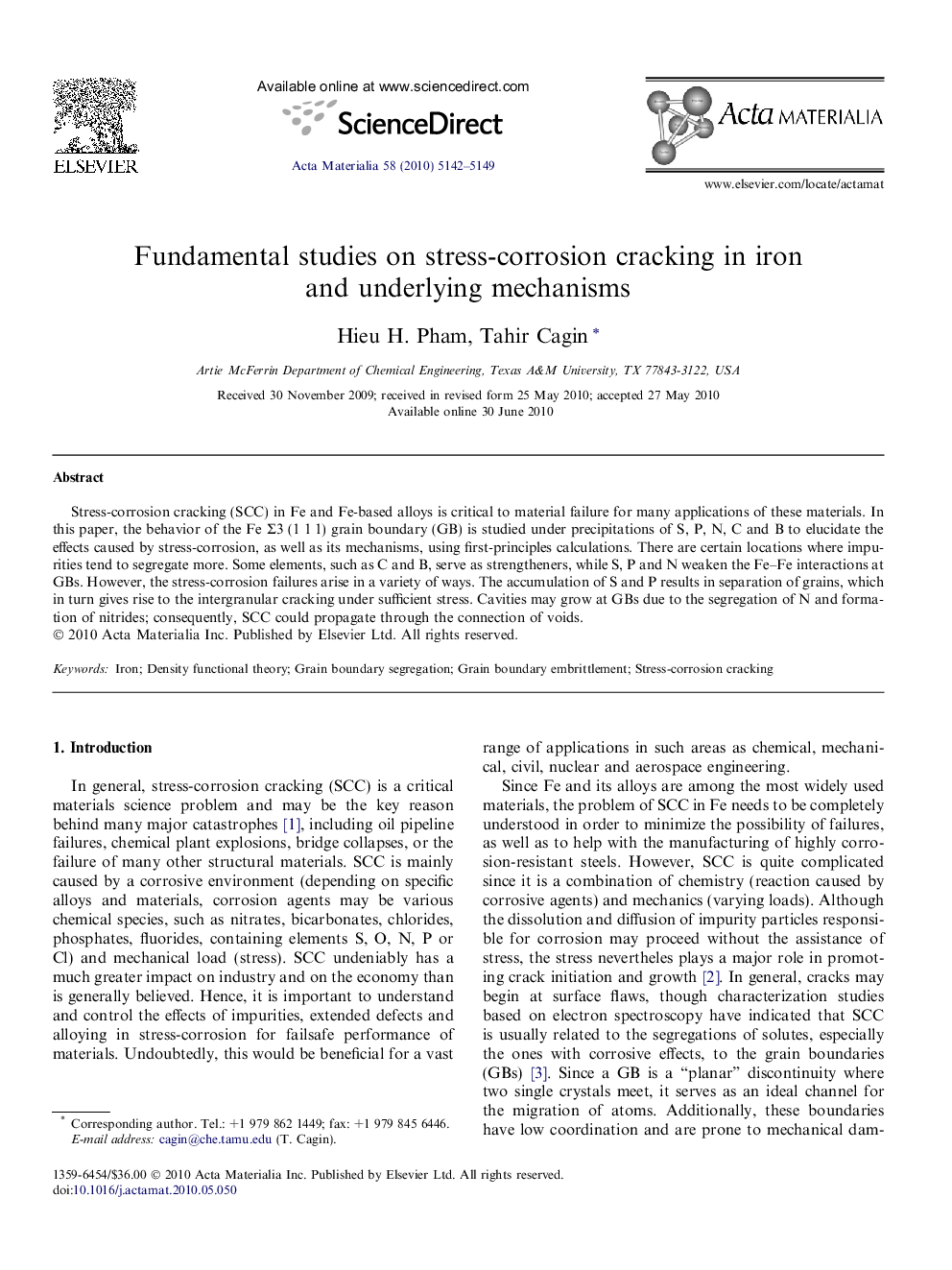| Article ID | Journal | Published Year | Pages | File Type |
|---|---|---|---|---|
| 1448403 | Acta Materialia | 2010 | 8 Pages |
Stress-corrosion cracking (SCC) in Fe and Fe-based alloys is critical to material failure for many applications of these materials. In this paper, the behavior of the Fe Σ3 (1 1 1) grain boundary (GB) is studied under precipitations of S, P, N, C and B to elucidate the effects caused by stress-corrosion, as well as its mechanisms, using first-principles calculations. There are certain locations where impurities tend to segregate more. Some elements, such as C and B, serve as strengtheners, while S, P and N weaken the Fe–Fe interactions at GBs. However, the stress-corrosion failures arise in a variety of ways. The accumulation of S and P results in separation of grains, which in turn gives rise to the intergranular cracking under sufficient stress. Cavities may grow at GBs due to the segregation of N and formation of nitrides; consequently, SCC could propagate through the connection of voids.
